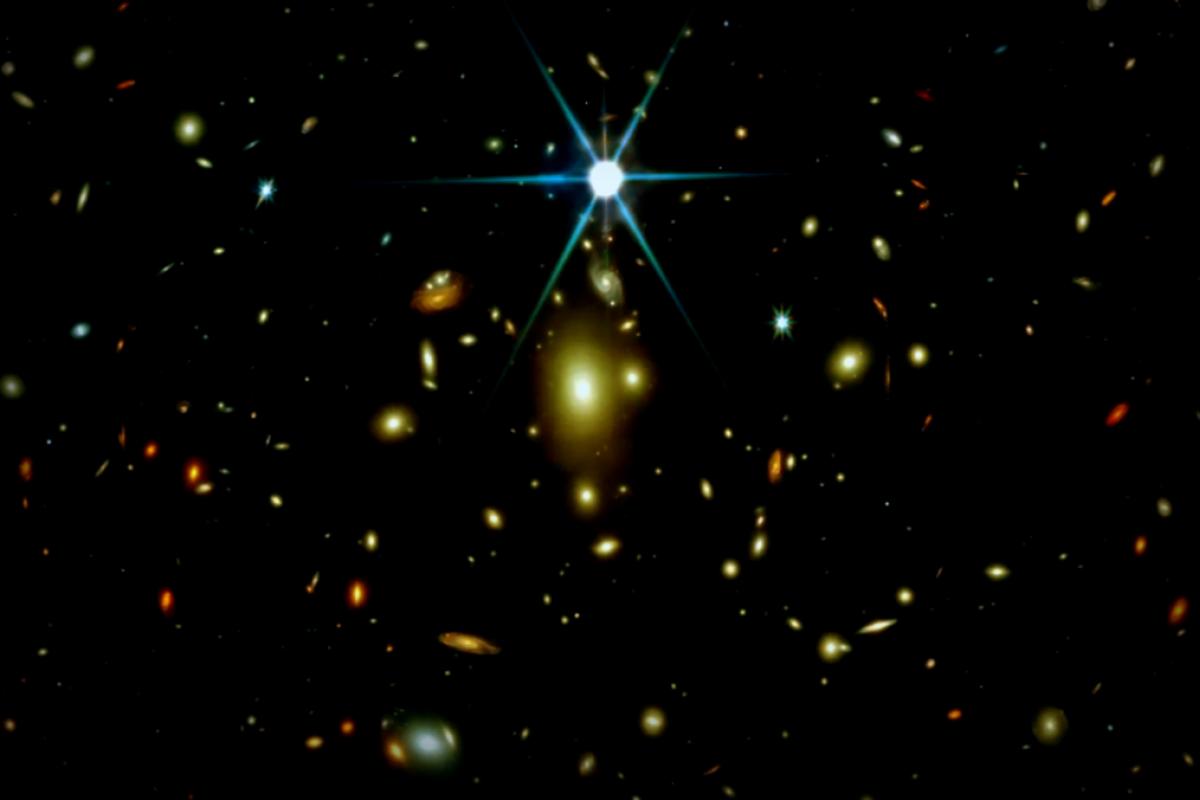So, here’s a twist in the cosmic story: the most distant star we’ve ever come across, known as Earendel—named from the Old English term for “morning star”—might not just be a lone star. New research suggests it could actually be a cluster of stars held together by gravity, hailing from the same gas and dust cloud.
Earendel was originally spotted by the Hubble Space Telescope in 2022, with the impression that it formed a mere 900 million years after the Big Bang, when the universe was just 7% of its current age. But a study published on July 31 in The Astrophysical Journal used the incredible capabilities of the James Webb Space Telescope (JWST) to give Earendel another look. This time, they were checking to see if it might be a compact star cluster instead of a solitary star.
The findings indicated that the characteristics of Earendel’s light actually resemble those from globular clusters found in our own universe.
Massimo Pascale, a Ph.D. student in astronomy at UC Berkeley and the lead author of the study, shared some thoughts with Live Science, saying, “What’s reassuring about this research is that if Earendel really is a star cluster, that wouldn’t be out of the ordinary! This work suggests that it aligns pretty well with what we expect globular clusters to look like in their early years in the vast scheme of the universe.”
An ancient marvel
Located a staggering 12.9 billion light-years away in the Sunrise Arc galaxy, Earendel was uncovered thanks to a neat trick called gravitational lensing. This phenomenon, predicted by Einstein’s theory of general relativity, occurs when heavyweight cosmic objects warp the light flowing past them. A giant galaxy cluster sits between us and Earendel and is so massive that it warps spacetime around it, magnifying the light from Earendel that would ordinarily be too faint for our instruments.
In fact, gravitational lensing makes Earendel seem at least 4,000 times more luminous! The magnification is strongest in specific regions—if a star or galaxy happens to be close enough, it can be magnified hundreds or even thousands of times. Earendel just happens to be positioned pretty close to such a “sweet spot,” which lets us see it as it is right now, despite the incredible distance.
After the initial discovery of Earendel, researchers dug deeper using data from JWST’s Near Infrared Imager (NIRCam). They figured that Earendel could be a massive star that’s more than twice as hot as the sun and roughly one million times brighter than it. They also spotted a potential cooler sibling star in its color data.
Pascale mentioned, “Some recent findings indicated Earendel could actually be much larger than previously estimated, so it made sense to consider the possibility of it being a star cluster.”
Employing spectroscopic data from JWST’s NIRSpec equipment, the researchers looked closely at Earendel’s age and metal content. The analysis suggested a smooth brightness change over various light wavelengths, something indicative of a star cluster rather than just a single star.
Brian Welch, a postdoctoral researcher at the University of Maryland and a principal player in Earendel’s discovery, stated, “While the new data is intriguing, it may still not be enough to say for sure that Earendel is a star cluster. The predictions from the NIRSpec may overlap significantly with those from a singular star. Thus, it’s important to consider all possible scenarios when studying these magnified objects.”
The team only explored the star cluster theory, examining no other paths such as the notion of Earendel being a single or multiple stars system.
In agreement, both Pascale and Welch emphasized that observing microlensing is the key to unlocking Earendel’s true nature. Microlensing, a type of gravitational lensing, happens when another mass passes between us and a distant object, altering its view. Brightness changes due to microlensing are more apparent in smaller distant objects like stars, making it a crucial area of focus for the researchers.
Pascale concluded, “It’ll be super exciting to see what future JWST missions can unearth about Earendel’s mysteries!”



















